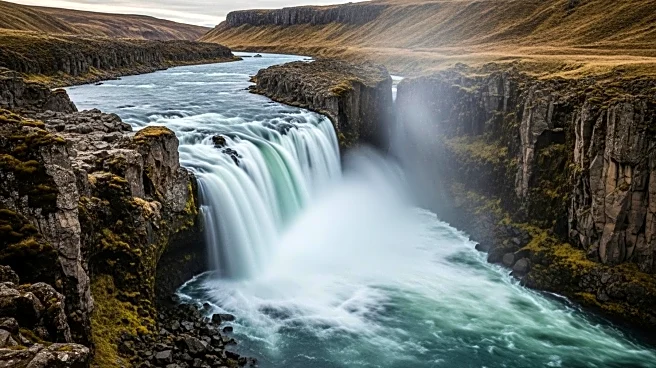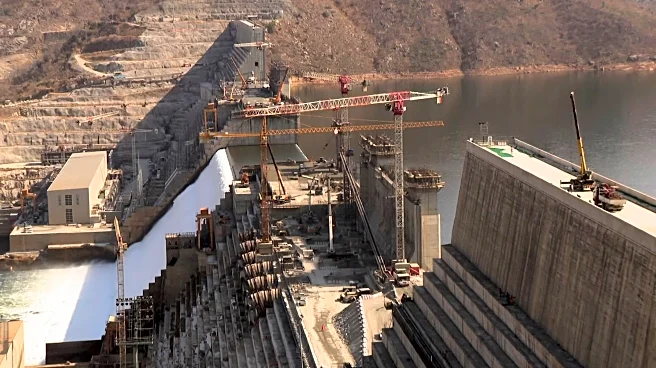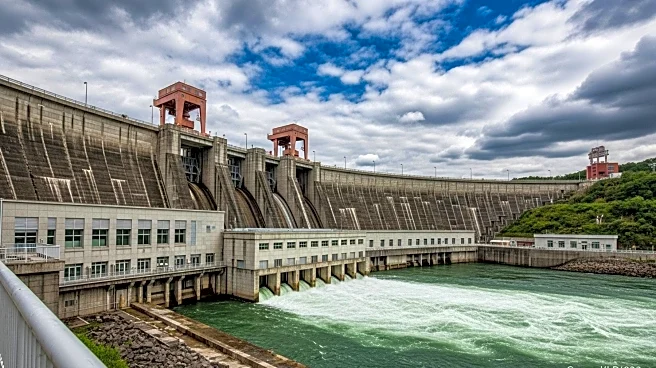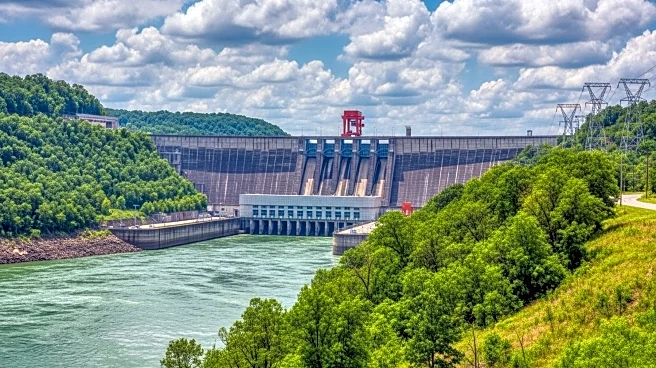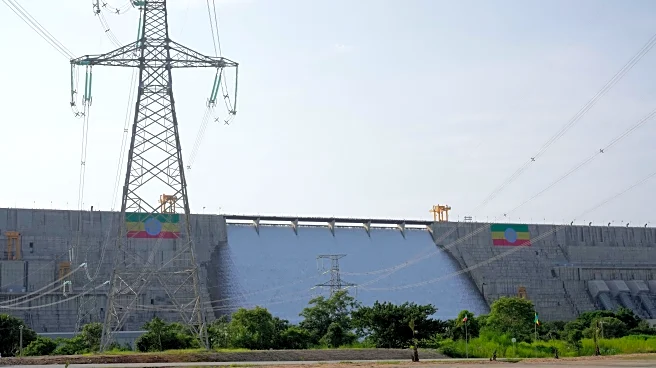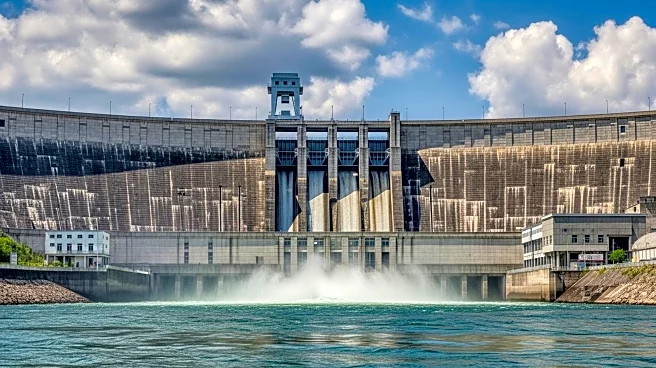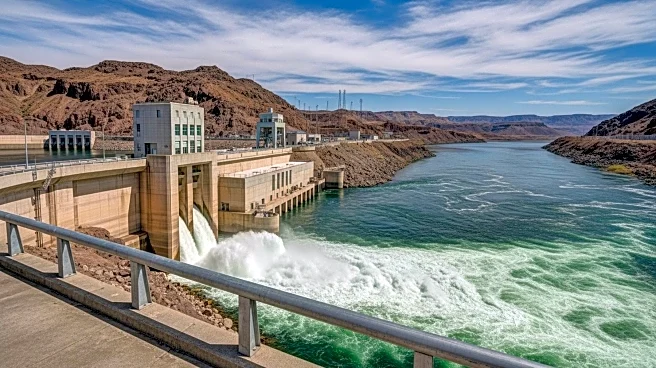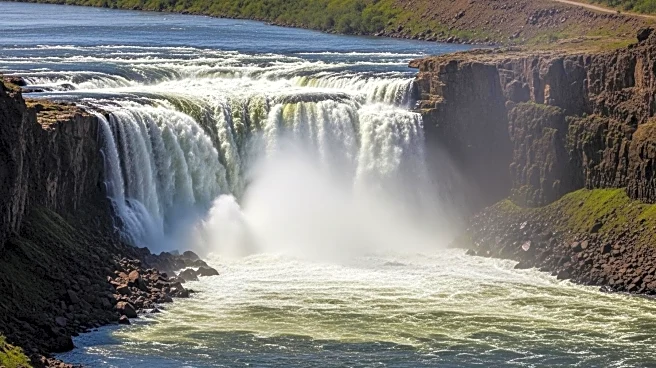What's Happening?
Ethiopia has officially inaugurated the Grand Ethiopian Renaissance Dam (GERD), Africa's largest hydroelectric dam, on a tributary of the River Nile. The $5 billion project is central to Ethiopia's economic development plans, aiming to increase electricity access for its population and export surplus power to neighboring countries. However, the dam has been a source of tension with downstream countries, particularly Egypt, which relies on the Nile for 90% of its fresh water. Egypt fears the dam could restrict its water supply during droughts and has called for legally binding agreements on the dam's operation. Despite these concerns, Ethiopia has proceeded with the dam's development, asserting its sovereign right to utilize its resources.
Why It's Important?
The inauguration of the GERD is significant as it represents a major step in Ethiopia's economic ambitions, potentially transforming the country's energy landscape. However, it also exacerbates regional tensions, particularly with Egypt, which views the dam as a threat to its water security. The situation highlights the complex interplay between development and resource management in the Nile Basin, with potential implications for regional stability. The dam's operation could lead to diplomatic strains or even conflict if not managed through cooperative agreements. The U.S. has previously shown interest in mediating the dispute, indicating the international dimension of the issue.
What's Next?
The next steps involve continued negotiations between Ethiopia, Egypt, and Sudan to reach a consensus on the dam's operation. Egypt is likely to maintain its diplomatic efforts to secure a binding agreement, while Ethiopia will focus on maximizing the dam's benefits for its development. The international community, including the U.S., may play a role in facilitating dialogue to prevent escalation. Monitoring the dam's impact on water flow and regional relations will be crucial in the coming months.
Beyond the Headlines
The GERD project underscores broader themes of national sovereignty and resource utilization in Africa. It also raises questions about the balance between development and environmental sustainability. The dam's construction without foreign assistance highlights Ethiopia's determination to assert its independence in infrastructure development. The project could serve as a model for other African nations seeking to harness their natural resources for economic growth.
